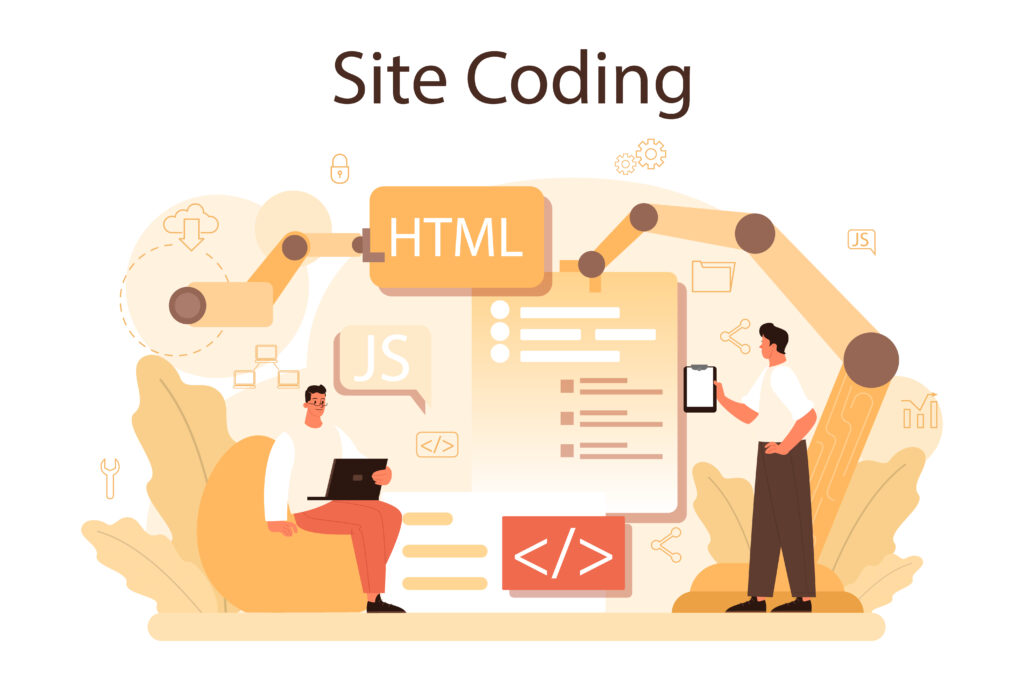Understanding HTML Attributes for Building Your Website
HTML attributes are essential components of HTML elements, providing additional information and functionality. They modify the behavior and presentation of HTML tags, making them more dynamic and interactive. In this blog post, we’ll explore various HTML attributes, their significance, and how to use them effectively to enhance your website.
What Are HTML Attributes?
HTML attributes are special words used inside the opening tag of an HTML element to control the element’s behavior or appearance. They consist of a name and a value, written as name="value". For example, in the image element <img src="image.jpg" alt="Description">, src and alt are attributes, with image.jpg and Description as their respective values.
Common HTML Attributes
1. class
The class attribute specifies one or more class names for an element. Classes are used to apply CSS styles to elements and can be assigned to multiple elements.
<p class="intro">This is an introductory paragraph.</p>
<div class="container">This is a container div.</div>2. id
The id attribute specifies a unique identifier for an element. Each id value must be unique within a document, making it useful for targeting specific elements with CSS or JavaScript.
<h1 id="main-heading">Main Heading</h1>
<p id="first-paragraph">This is the first paragraph.</p>3. style
The style attribute allows you to apply CSS styles directly to an element. While it’s generally better to use external or internal CSS stylesheets, the style attribute can be useful for quick styling.
<p style="color: blue; font-size: 18px;">This paragraph is styled with the style attribute.</p>4. title
The title attribute provides additional information about an element. This information typically appears as a tooltip when the user hovers over the element.
<a href="https://www.example.com" title="Visit Example.com">Example</a>5. href
The href attribute is used in anchor (<a>) tags to specify the URL of the page the link goes to.
<a href="https://www.example.com">Visit Example.com</a>6. src
The src attribute is used in image (<img>) and script (<script>) tags to specify the path to the image or script file.
<img src="image.jpg" alt="Description of image">
<script src="script.js"></script>7. alt
The alt attribute provides alternative text for an image, which is displayed if the image cannot be loaded. It is also important for accessibility, as screen readers use it to describe the image to visually impaired users.
<img src="image.jpg" alt="Description of image">8. width and height
The width and height attributes specify the width and height of an image or other element.
<img src="image.jpg" alt="Description of image" width="500" height="300">9. target
The target attribute is used in anchor (<a>) tags to specify where to open the linked document. The value _blank opens the link in a new tab or window.
<a href="https://www.example.com" target="_blank">Open Example in New Tab</a>10. rel
The rel attribute specifies the relationship between the current document and the linked document. It is often used with the href attribute in anchor tags.
<a href="https://www.example.com" rel="noopener noreferrer">Example</a>Form Attributes
Forms are crucial for collecting user input on websites. Several attributes are commonly used with form elements to manage the input process.
1. action
The action attribute specifies the URL where the form data should be sent when the form is submitted.
<form action="/submit" method="post">
<label for="name">Name:</label>
<input type="text" id="name" name="name">
<input type="submit" value="Submit">
</form>2. method
The method attribute specifies the HTTP method to use when sending form data. The most common values are GET and POST.
<form action="/submit" method="post">
<!-- Form elements go here -->
</form>3. name
The name attribute specifies the name of a form element. It is used to identify form data after it is submitted.
<label for="email">Email:</label>
<input type="email" id="email" name="email">4. placeholder
The placeholder attribute provides a hint to the user about what to enter in the input field.
<input type="text" placeholder="Enter your name">5. value
The value attribute specifies the initial value of an input element.
<input type="text" value="Default Value">Event Attributes
Event attributes are used to handle events in HTML elements. They are commonly used in conjunction with JavaScript to make web pages interactive.
1. onclick
The onclick attribute triggers a JavaScript function when the element is clicked.
<button onclick="alert('Button clicked!')">Click Me</button>2. onmouseover
The onmouseover attribute triggers a JavaScript function when the mouse pointer is over the element.
<input type="text" onchange="console.log('Value changed!')">3. onchange
The onchange attribute triggers a JavaScript function when the value of an input element changes.
<input type="text" onchange="console.log('Value changed!')">Global Attributes
Global attributes can be used on any HTML element, providing additional functionality and control.
1. data-*
The data-* attributes allow you to store custom data on HTML elements. They are useful for storing information that can be accessed by JavaScript.
<div data-user-id="12345">User Information</div>2. hidden
The hidden attribute hides an element from view.
<p hidden>This paragraph is hidden.</p>3. tabindex
The tabindex attribute specifies the tab order of an element when the user navigates through the page using the Tab key.
<input type="text" tabindex="1">
<input type="text" tabindex="2">4. title
The title attribute provides additional information about an element. It often appears as a tooltip when the user hovers over the element.
<span title="Tooltip text">Hover over me</span>ARIA (Accessible Rich Internet Applications) Attributes
ARIA attributes enhance accessibility by providing additional information to screen readers and other assistive technologies.
1. aria-label
The aria-label attribute provides a label for an element, improving accessibility for users with screen readers.
<button aria-label="Close">X</button>2. aria-hidden
The aria-hidden attribute indicates whether an element is visible to assistive technologies.
<div aria-hidden="true">This content is hidden from screen readers.</div>3. role
The role attribute defines the role of an element, making it easier for assistive technologies to understand the purpose of the element.
<div role="navigation">Navigation Bar</div>Conclusion
HTML attributes are powerful tools that enhance the functionality, interactivity, and accessibility of web pages. By mastering the use of these attributes, you can create more dynamic and user-friendly websites. Whether you’re styling elements with class and id, adding interactivity with onclick, or improving accessibility with ARIA attributes, understanding and using HTML attributes effectively is essential for any web developer.
If you found this guide helpful, consider sharing it with others who are also starting their journey into web development. Stay tuned for more tutorials on CSS, JavaScript, and other web technologies to take your skills to the next level. Happy coding!

